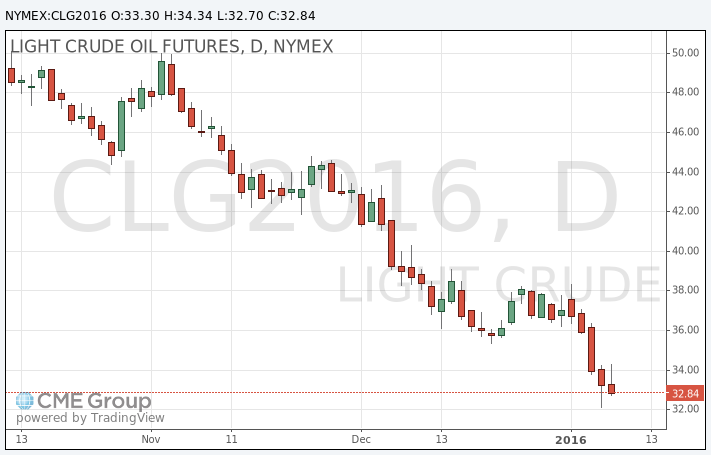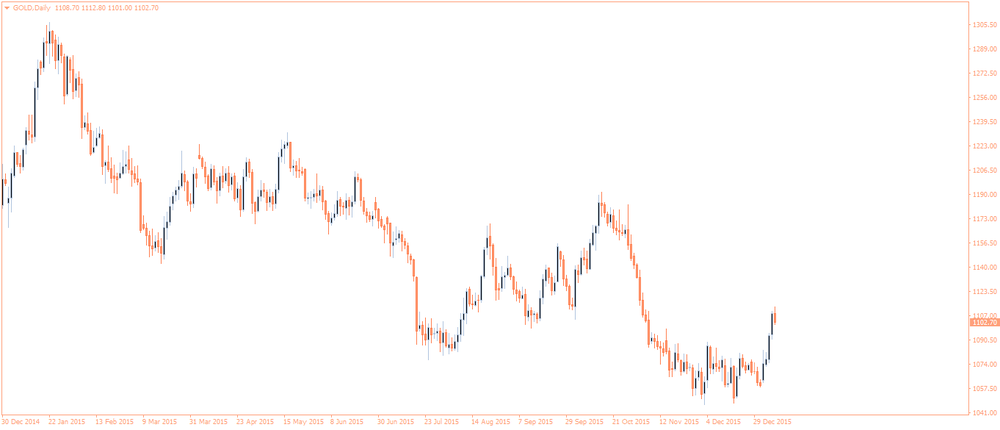Noticias del mercado
-
17:59
Oil prices trade mixed
Oil prices traded mixed as Chinese stock market stabilised. The China Securities Regulatory Commission announced on Thursday that it suspended circuit-breaker rules. The circuit-breaker rules intended to stop free-falling share prices and to calm markets.
Concerns over the global oil oversupply weighed on oil prices.
Market participants are also awaiting the release of the number of active U.S. rigs later in the day.
WTI crude oil for February delivery declined to $32.65 a barrel on the New York Mercantile Exchange.
Brent crude oil for February rose to $33.85 a barrel on ICE Futures Europe.
Oil prices traded mixed as Chinese stock market stabilised. The China Securities Regulatory Commission announced on Thursday that it suspended circuit-breaker rules. The circuit-breaker rules intended to stop free-falling share prices and to calm markets.
Concerns over the global oil oversupply weighed on oil prices.
Market participants are also awaiting the release of the number of active U.S. rigs later in the day.
WTI crude oil for February delivery declined to $32.65 a barrel on the New York Mercantile Exchange.
Brent crude oil for February rose to $33.85 a barrel on ICE Futures Europe.

-
17:54
Gold decreases on a stronger U.S. dollar.
Gold price declined on a stronger U.S. dollar. The U.S. dollar rose against other currencies after the release of the better-than-expected U.S. labour market data. The U.S. Labor Department released the labour market data on Friday. The U.S. economy added 292,000 jobs in December, exceeding expectations for a rise of 200,000 jobs, after a gain of 252,000 jobs in November. November's figure was revised up from a rise of 211,000 jobs.
The increase was partly driven by a rise in construction, professional and technical services, and health care. Health care sector added 39,200 jobs in December, professional and business services sector added 73,000 jobs, while construction added 45,000.
The manufacturing sector added 8,000 jobs in December, while mining sector shed 8,000 jobs.
The U.S. unemployment rate remained unchanged at 5.0% in December, in line with expectations.
Average hourly earnings were flat in December, missing forecasts of a 0.2% gain, after a 0.2% increase in November.
The labour-force participation rate increased to 62.6% in December from 62.5% in November.
February futures for gold on the COMEX today fell to 1091.80 dollars per ounce.

-
15:08
U.S. unemployment rate remains unchanged at 5.0% in December, 292,000 jobs are added
The U.S. Labor Department released the labour market data on Friday. The U.S. economy added 292,000 jobs in December, exceeding expectations for a rise of 200,000 jobs, after a gain of 252,000 jobs in November. November's figure was revised up from a rise of 211,000 jobs.
The increase was partly driven by a rise in construction, professional and technical services, and health care. Health care sector added 39,200 jobs in December, professional and business services sector added 73,000 jobs, while construction added 45,000.
The manufacturing sector added 8,000 jobs in December, while mining sector shed 8,000 jobs.
The U.S. unemployment rate remained unchanged at 5.0% in December, in line with expectations.
Average hourly earnings were flat in December, missing forecasts of a 0.2% gain, after a 0.2% increase in November.
The labour-force participation rate increased to 62.6% in December from 62.5% in November.
These figures indicate that the Fed may raise its interest rate further this year. The Fed hiked its interest rates by a 0.25% to between 0.25% and 0.50% in December.
-
07:44
Oil prices rebounded
West Texas Intermediate futures for February delivery rebounded to $33.97 (+2.10%), while Brent crude rose to $34.37 (+1.84%) on stabilization in Chinese stock markets. Investors panicked after the People's Bank of China set the exchange rate of the national currency lower; however today the PBOC set the midpoint rate of the yuan higher. In the previous session crude prices fell to 12-year lows and today's gains were limited by persistent supply glut.
Chinese stocks rose today, but this week's turmoil intensified concerns over health of the economy of the second-biggest oil consumer and potential demand growth.
-
07:32
Gold retreated
Gold slid to $1,103.10 (-0.42%) retreating from a nine-week high after the People's Bank of China set the midpoint rate of the yuan higher. This move supported Asian stocks and reduced demand for bullion. Some analysts say that now volatility on Chinese stock markets drives gold.
Assets of SPDR Gold Trust, world's biggest gold-backed exchange-traded fund, rose 0.65% to 645.13 tonnes on Thursday, the first gain in three weeks.
-
00:33
Commodities. Daily history for Jan 7’2016:
(raw materials / closing price /% change)
Oil 33.29 +0.06%
Gold 1,108.80 +0.09%
-
